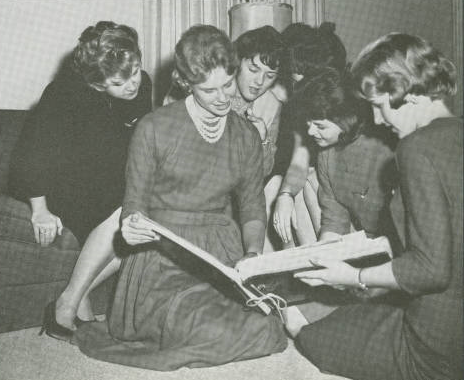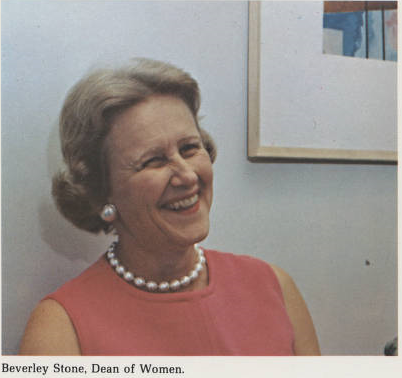Purdue University in northern Indiana, like most American colleges and universities, experienced dramatic social and cultural changes in the 1960s and 1970s. The Dean of Women’s Office—which oversaw the affairs of female students until it merged with the Dean of Men’s Office to form the Dean of Students Office in 1974—had a view of student sexual behavior that blended care for individual students with the ability to shape and uphold all-campus policies. An examination of school publications, university correspondence, annual reports, school and policy statements shows that in the early 1960s administrators created an atmosphere that increased female students’ personal freedom, but only provided piecemeal sex education and counseling. However, by the late 1960s and early 1970s, both administrators and students took initiatives to change and to enforce policies that would improve sex education and the lives of women on the campus as a whole.

For female students in the early 1960s, issues of sexual behavior were primarily tied to dormitory curfews, the role of the fraternity and sorority systems on campus, and the availability of on-campus housing. However, panty raids (fraternity men stealing and then displaying women’s underwear), like one on the Kappa Alpha Theta sorority house in April 1961, showed that curfews did not address the potential for male student violence at any hour. A male “mob of students,” an assistant dean of women wrote, broke the front door “by ramming a boat which was in the yard into the door” and stole $50 worth of lingerie from three residents. It is unclear whether the “mob” had to even pay the damages or to apologize. In Sex in the Heartland, historian Beth Bailey documented similar panty raids and official responses to them at the University of Kansas: administrators dismissed men’s threatening behavior toward women with a “boys will be boys” mentality.
As the unmarried male and female student population grew faster than the campus could build new dormitories throughout the 1960s, more single female students started to live off-campus, and their lives and behavior were more loosely monitored than those of on-campus students. In the 1960–1961 school year, Purdue, like many other American public universities, shortened curfew hours for female students, requiring them to return to their dormitories by 11pm on weeknights and 1am on weekend nights. By fall 1969, after a campus-wide study, the university lifted the curfew on women students entirely. However, in a letter to a concerned mother, dated February 11, 1970, the Dean of Women’s Office continued to place the burden of policing male misbehavior on women: “We have continually urged women students not to walk alone after dark, and we are trying to educate women students to their responsibility in reporting to a staff member any unaccompanied man who may be in any area of a residence unit other than the social areas.”

Letters from the Dean of Women’s Office and its annual reports describe both similarities and differences before and after 1970. Throughout most of the 1960s, Dean’s Office staff provided individual counseling for students with mental health concerns and “problem pregnancies,” but did not promote systemic change that would address such issues campus-wide. A series of campus protests in the 1968–1969 school year, however, shifted what students expected of the administration. In that year, students advocated for free speech in the student newspaper (The Exponent); produced an underground newspaper called Bauls, which included nude images of unidentified students and the nude cover of John Lennon and Yoko Ono’s Two Virgins album; demanded African-American and Hispanic Studies courses; and organized a sit-in at the student union. Those protests also shifted how the administration viewed its role in helping students develop the skills they needed to navigate new ideas of adulthood, including racial and sexual identity.
The Dean of Women’s Office annual report for the 1969–1970 school year shows that students were bringing both old and new concerns to the counseling staff, and that the office began to develop programming and strategies that better matched students’ thinking about their lives. Female students continued to be concerned about their sex lives, though instead of bringing “problem pregnancies” to the office’s doorstep, they asked for post-abortion counseling. Students started asking the counselors questions about interracial dating, sex outside of marriage, and homosexuality. In short, wrote one counselor, “Many students are in the process of finding themselves and determining their own philosophy of life,” and they were still turning to members of the administration for advice. Additionally in that school year, the staff co-founded a Campus Ministers Committee on Sexuality, gave presentations to multiple sorority, fraternity, and other student groups on issues such as sexuality, homosexuality, and women’s liberation, and encouraged students to visit the campus health center for birth control.
The late 1960s and early 1970s shifted the structures of a large, conservative, male-dominated, rural, technical university like Purdue, and the changes that took place demonstrated that the university administration was less opposed to significant shifts in its relationships to students than the most radical students might have thought. Nancy W. Friedersdorf, an Assistant Dean of Women, noted in her 1970–1971 annual report that:
Women students have real concerns of pre-marital sex, social relationships, career-planning, interracial dating and educational achievement…There has been an increased involvement for me with problems of sexuality this year. Women students, as well as men students, wanted more information and an opportunity to talk about the psychological effects of pre-marital sex. Many feel a lack of opportunity for honest discussion of spiritual values and emotional aspects in this area. It is my sincere belief that students need honest and open responses to their questions.
Students and administrators attempted to make the university a better place to contemplate new ideas about sexual behavior and identity. Nonetheless, administrative efforts throughout the 1970s apparently fell short of feminist student aims. In 1979, a small group of female students established Sisters for Health Education (SHE), dedicated to women’s health (including sexual health). However, the group was short-lived, disbanding in 1981. Improving student sexual health and understanding at Purdue worked best when students and staff worked together toward similar goals. Student sexual health and behavior remain intense and much-debated topics across American university campuses. Despite significant improvements made since the 1960s in sexual health programming, education, and resources, there is still a long way to go in making higher education institutions safe places for students of all sexualities.
All quotations from the Dean of Women’s Collection are republished with the permission of the Virginia Kelley Karnes Archives and Special Collection Research Center, Purdue University, West Lafayette, Indiana, USA.

Donna J. Drucker is Assistant Director of the Office of Scholarship and Research Development at the Columbia University School of Nursing. She is the author of The Machines of Sex Research, The Classification of Sex, Contraception, and Fertility Technology. She tweets from @histofsex

NOTCHES: (re)marks on the history of sexuality is licensed under a Creative Commons Attribution-NonCommercial-NoDerivatives 4.0 International License.
Based on a work at www.notchesblog.com.
For permission to publish any NOTCHES post in whole or in part please contact the editors at NotchesBlog@gmail.com




